13 Amazing Experiences in Yogyakarta Worth the Money
This post may contain affiliate links. If you make a purchase using one of these links, I may receive a small reward at no extra cost to you. See my Disclosure Policy for more information.
Yogyakarta has the highest density of cultural and historical places in Java. You can visit tens of ancient temples, century-old markets, history museums, royal Javanese architecture, you name it.
There are also so many different activities you can partake in while in the city of culture and education (it’s often called Kota Belajar – the City of Education). Some experiences are quite unique too!
As someone who’s spent months here, here are the best tours in Yogyakarta: volcanoes, caves, temples, and cultural immersion, your thing is here no matter who you are!
I’ve also included tips on how to do them independently.
1. Sunrise at Borobudur
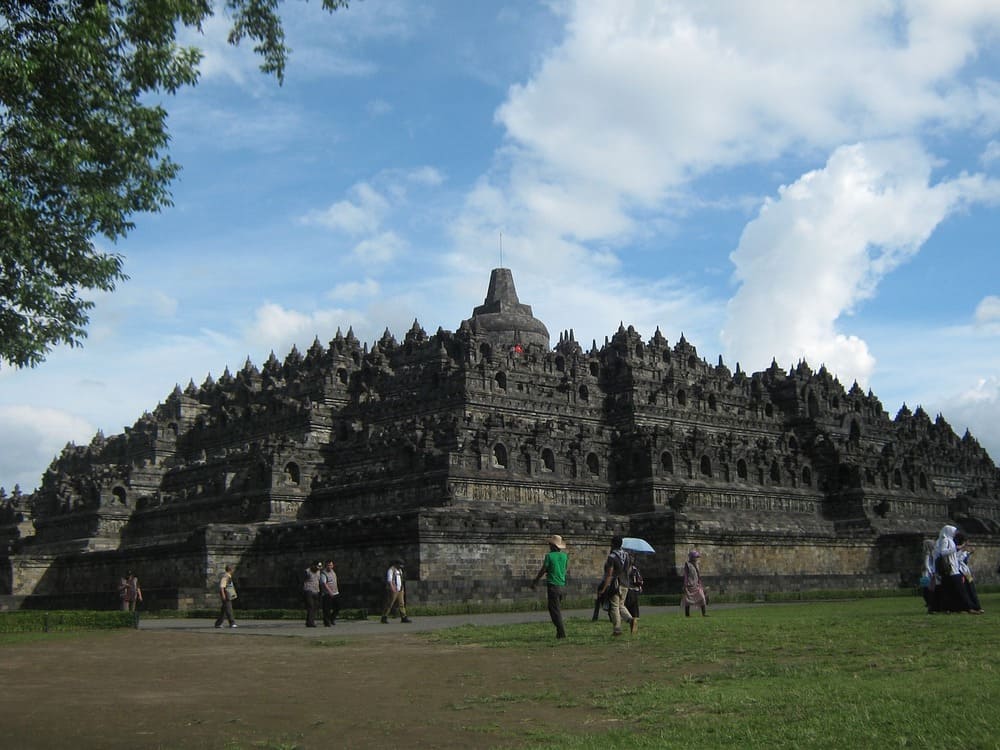
That’s the mandatory Yogyakarta experience, isn’t it?
Who hasn’t heard of Borobudur, the biggest Buddhist temple in the world? I kid you not, some people get off the plane at Yogyakarta, go to visit Borobudur, then promptly return to the airport the same day and continue elsewhere.
Yes, it’s that famous.
Visiting Borobudur is actually quite easy during the day with a public bus. You can book tickets to either just visit or climb up the temple yourself too. All the up-to-date information is in this Borobudur Guide.
But going for sunrise is a bit more challenging and unless you want to ride a motorcycle at night for 40 km, it’s not possible to do it from Yogyakarta using public transport.
You either have to sleep near the Temple (there are plenty of good options, I recommend ADA Homestay – clean, cozy, cheap, and within walking distance from Borobudur) or you have to go on a tour.
In this case, I recommend this half-day Borobudur tour. It includes a hotel pick-up, witnessing the breathtaking sunrise from Setumbu Hill, and climbing Borobudur for a tour of the temple.
It also includes stops at two smaller temples: Candi Mendut and Candi Pawon.
2. Sunset at Prambanan
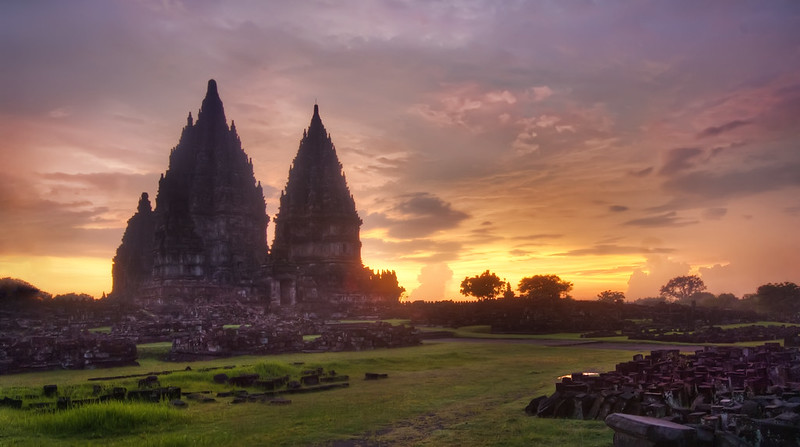
If the morning appearance of the sun is reserved for Borobudur, then its late afternoon disappearance is best experienced at Prambanan – the second-largest Hindu temple in the world.
I like Prambanan more than Borobudur to be honest:
- It’s a collection of temples (like 100 or so, both big and small!)
- There are three smaller, but equally impressive Buddhist temples included in the price (Candi Sewu, Lumbung, and Bubrah)
- All in all, Prambanan has a more mystical feel to it. Something about Hinduism just makes its temples cool!
You can very easily visit Prambanan for sunset from Yogyakarta using public transport.
If you’re short on time, you can also visit both Borobudur and Prambanan in a single day!
But if you’re short on time and want some convenience, a tour should be your choice. This Prambanan Sunset tour is awesome value for money and will take you to all the best places!
3. Watch the Ramayana Ballet
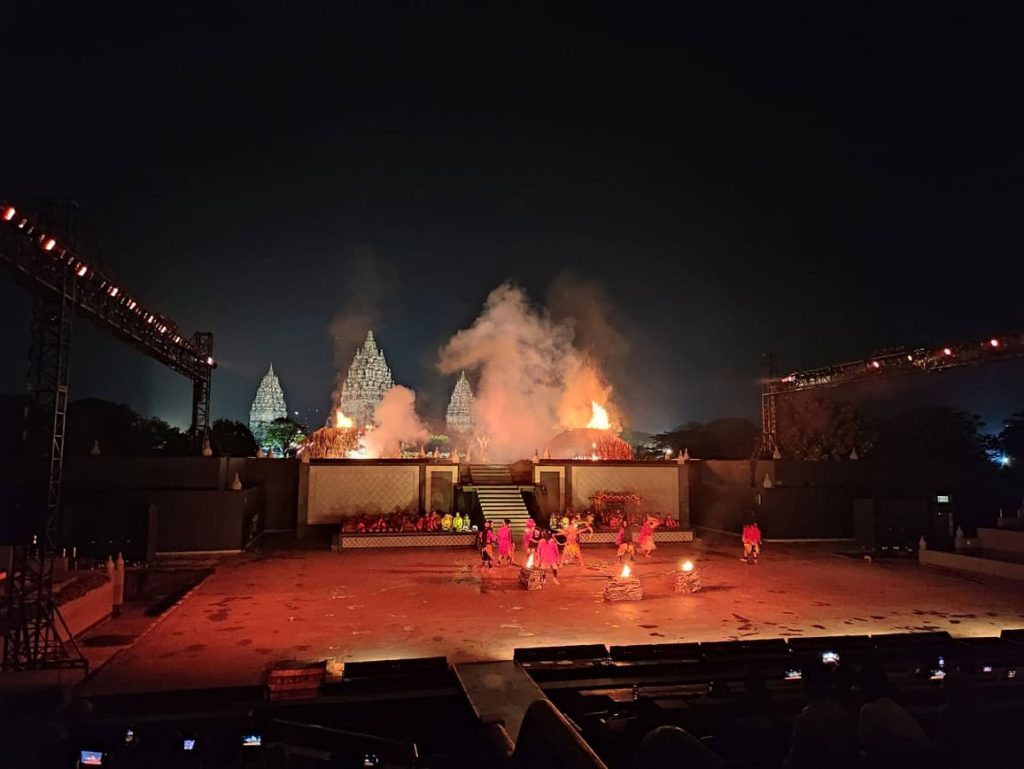
The Ramayana Ballet takes place next to Prambanan Temple and has been regularly performed since 1961. It is the biggest traditional dance performance in all of Indonesia (bigger than the ones in Bali)!
Check out my full guide with useful information about watching the Ramayana Ballet.
The Ramayana Ballet takes place after sunset and is very easily combined with a visit to Prambanan. You can easily do this independently (check my guide).
You can book the experience here:
- Just a ticket (choose class): BOOK THIS ONE;
- Prambanan Sunset + Ramayana Ballet: BOOK THIS ONE;
- Ramayana Ballet + Dinner: BOOK THIS ONE.
4. Watch Real Lava at the Merapi Volcano
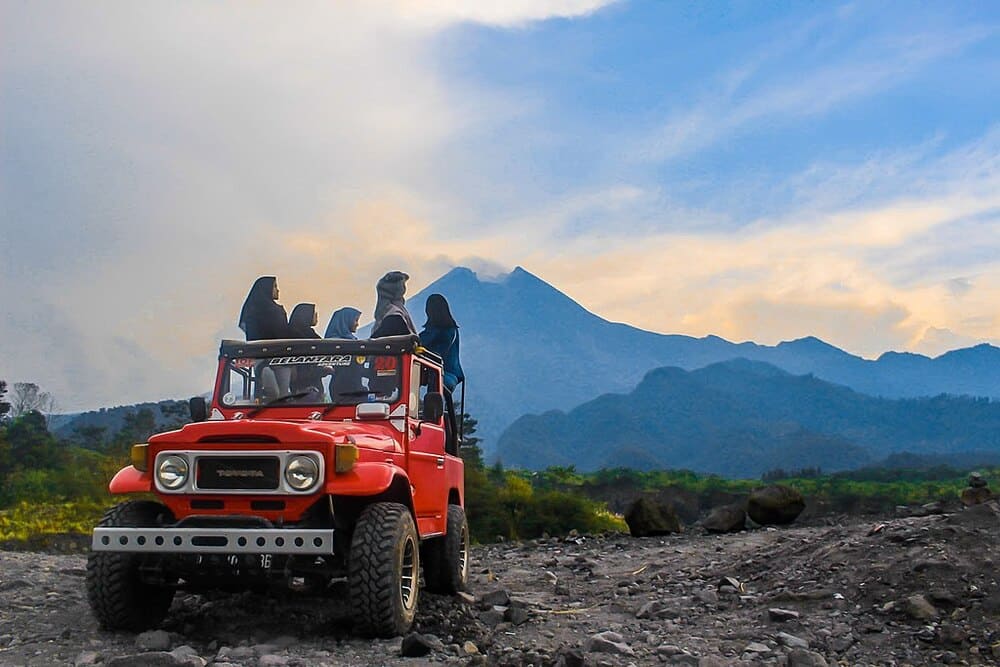
Yogyakarta is very near one extremely active volcano: Gunung Merapi.
Merapi is one of the decade volcanoes, a set of 16 volcanoes considered worthy of extensive study due to their destructive eruptions and proximity to population centers.
And yes! Merapi is extremely active! Not a year goes by without a sizable eruption and in recent history, 3 deadly ones. The most deadly happened in 2010 and took over 350 casualties.
Considering that, it’s no surprise that the area surrounding the volcano is off-limits for visitors.
However!
After dark and at the appropriate place, you can see lava flowing out of Merapi’s crater.
It’s kind of hard to do this independently, as you’d need a motorcycle, a good knowledge of the area, and where the good spots are.
On the other hand, Merapi tours will take you on a jeep around the volcano and the guides know the best places to see the lava. It’s one of the most popular and most booked Yogyakarta tours.
5. Rappel Down Jomblang Cave
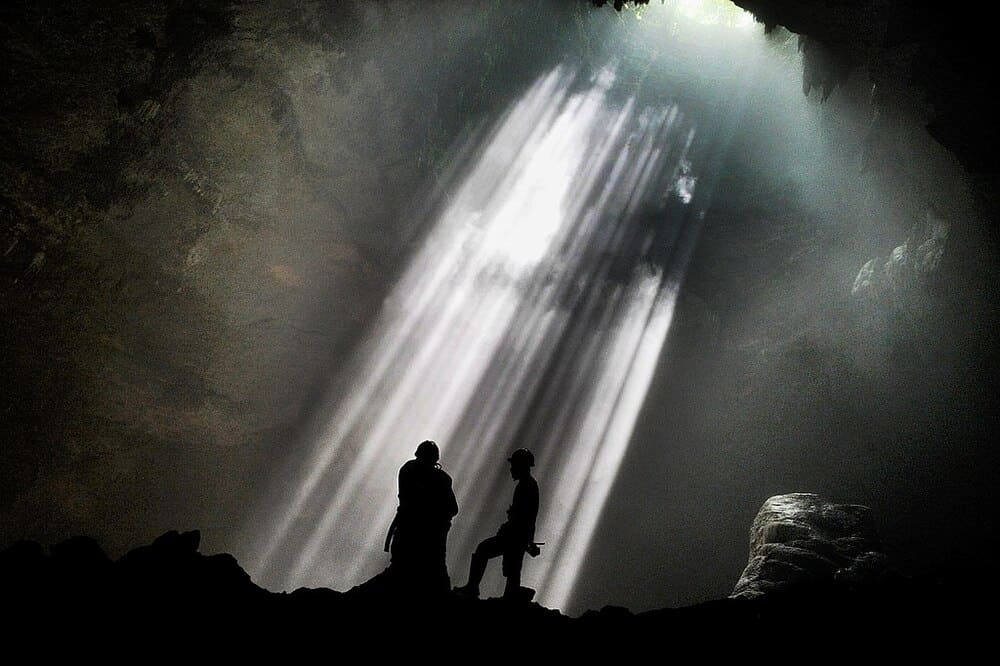
Jomblang Cave is unique in that it formed not due to ages of water slowly grinding away at rock (as in most caves), but in a sudden collapse that formed a vertical sinkhole.
That’s right, Goa Jomblang (Goa is the Indonesian word for cave) is a vertical 90-meter deep hole that the Javanese call a “luweng“.
Jomblang Cave is an ancient plant conservation site because the vegetation growing inside is unique.
Another awesome thing is the beautiful ray of light that you can only watch between 11:00 and 12:00 due to the small area of the mouth of the cave.
You will get rappeled down the 90-meter hole just before this small window of time and do what locals call “the muddy walk” for 20-30 minutes. Then, when you turn around, you will be able to watch the sunray go straight inside the cave with you below. Simply marvelous.
This experience carries a hefty cost of 500.000 IDR (32$).
Visiting Jomblang Cave independently is complicated, as there is neither public transport to it, nor can you guarantee entrance to the cave. An organized tour is therefore strongly recommended.
6. Join a Batik Class
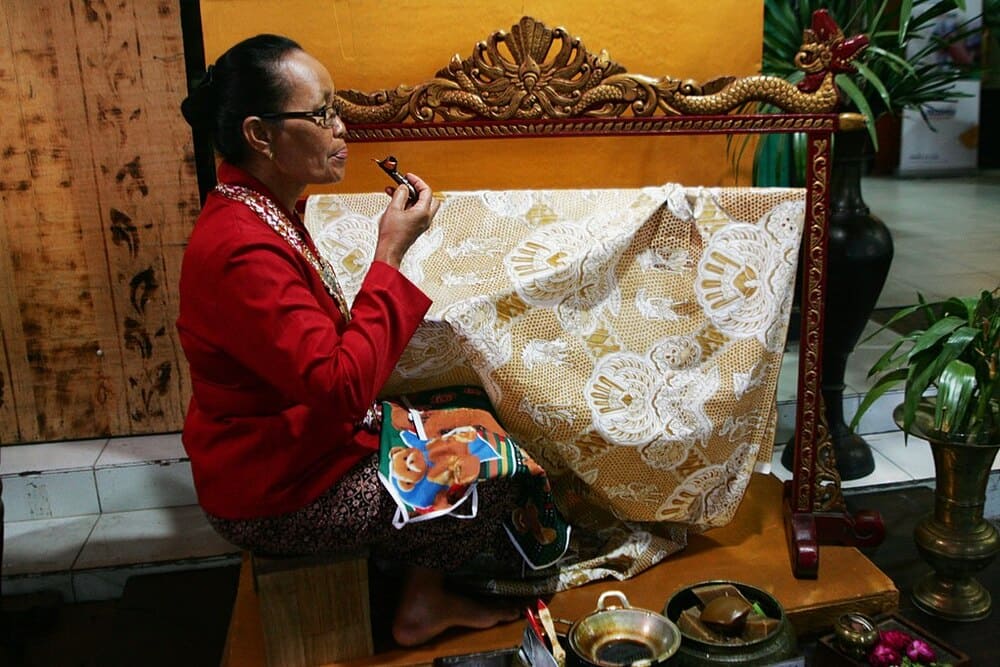
Yogyakarta is not only about temples, adventures, and adrenalin.
It’s also a city associated with culture, crafts, and arts.
And no crafty art is more Indonesian than the mighty batik: the UNESCO-recognized method of illustrating cloth by applying wax.
In a batik class, you will go through all the steps of batik creation:
- Sketch your unique design on the cloth;
- Heat some wax on a stove;
- Fill the canting with wax;
- Trace the pattern on the cloth;
- Select vibrant colors and paint the cloth;
- Remove the wax from the cloth by repeatedly dipping it in boiling water;
- Allow the fabric to dry.
The whole process takes 4-5 hours during which you will have helpful and experienced batik masters navigating you. Don’t forget to take your new batik creation with you!
7. Sample Local Food

Indonesia has some truly delicious (and sometimes overwhelmingly spicy) food!
Moreover, Yogyakarta has some unique foods that originate from the city. These include:
- Bakpia: a flaky pastry filled with mung bean paste, chocolate, or something else;
- Wedang Ronde: a hot sweet soup of rice dough balls and gingery, sugary syrup;
- Kopi Joss: A local variant of coffee where burning charcoal is dipped in it for a little;
- Gudek: a stew of unripe jackfruit chunks in coconut milk;
Of course, there are also your usual Indonesian snacks and desserts.
You can totally do a food tour yourself – note down some of the food items you want to try (the links above include over 60 different ones!): start at Tugu Monument and go down Malioboro Street.
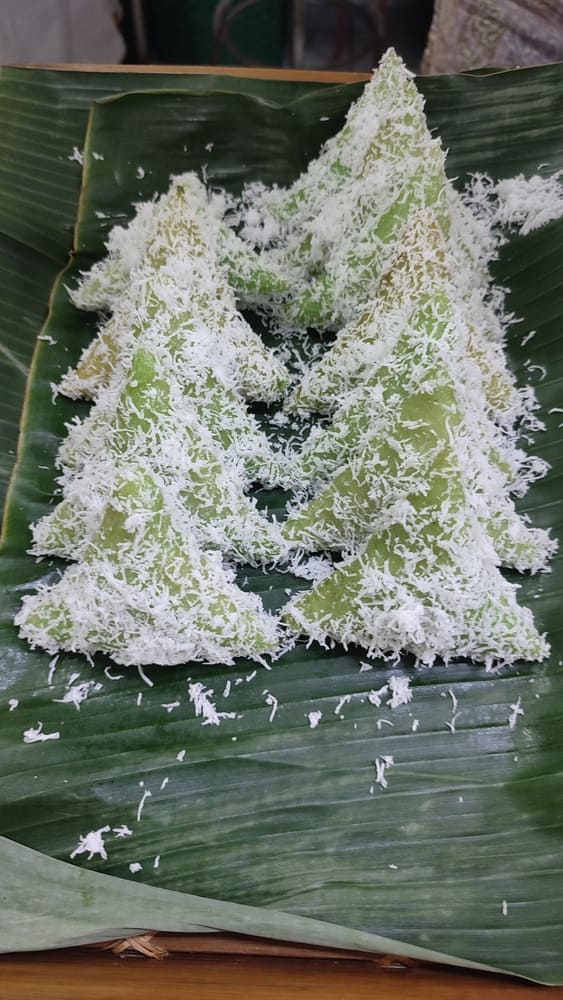
Go straight down carefully looking for vendors selling the food you want to try. After about 3.5 km you will reach Alun-alun Kidul, the south public square, which has over 100 food stands around it. You won’t be looking any further than that!
Still, if you want more information about the foods and their cultural significance, I suggest you book this night walking and food tour.
8. Go on a Day Trip to Surakarta
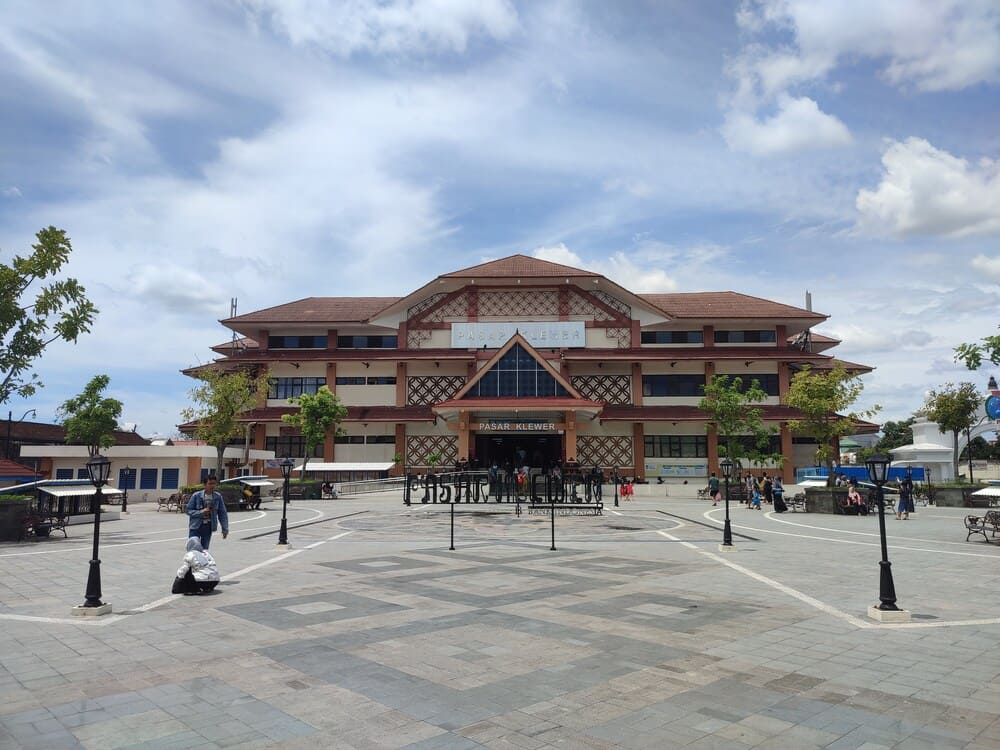
Surakarta is like a smaller sister to Yogyakarta. It also used to be a semi-autonomous monarchy, which remains the case for Yogyakarta to this day, but not for Surakarta.
Nonetheless, Surakarta (also called Solo) has retained its authentic Javanese character and takes an important place in Javanese history.
You can read about all the cool things to do in Surakarta to be prepared for when you go.
Some of the things you shouldn’t miss include:
- Surakarta Kraton (The Sultan’s Palace)
- Pasar Gedhe (try the Es Dawet there!)
- Pasar Klewer
- The Alun-Alun (Public Square)
- Batik Village
- Watch a Wayang-Orang performance at Sriwedari Park Theater
It’s easy to do a day trip there using the direct Commuter train link between Yogyakarta and Surakarta.
Trains depart regularly throughout the day, take an hour, and cost only 8.000 IDR (0.5$).
Surakarta is an awesome stop after 3 days in Yogyakarta and before going onward to Mount Bromo.
9. Soar Above the Clouds at Mount Merbabu
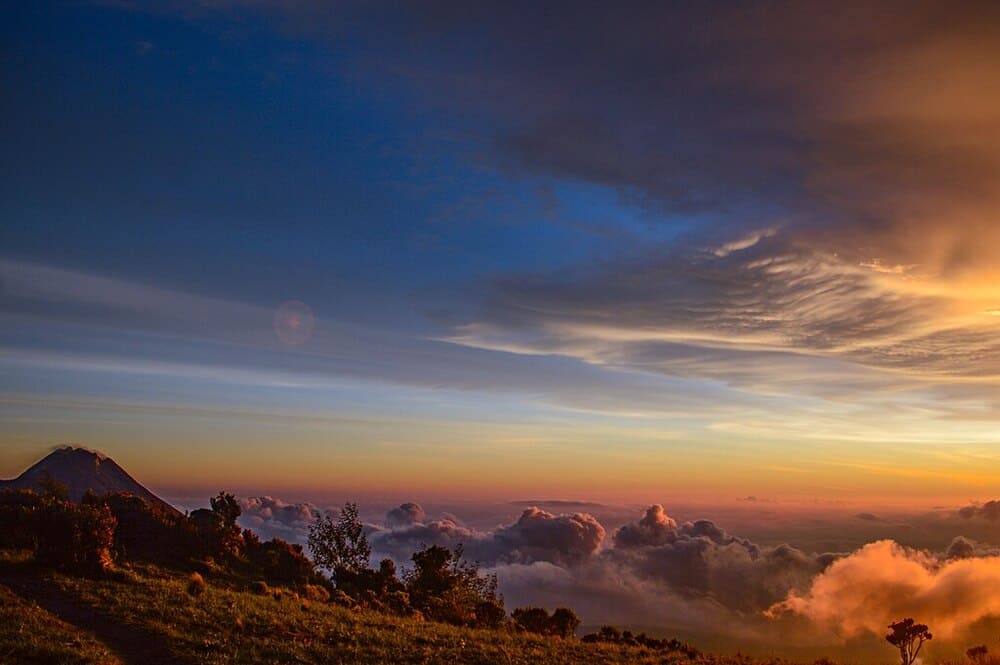
While Mount Merapi is closer to Yogyakarta and very violent and unpredictable, right behind it is Mount Merbabu: a taller and more peaceful (its last eruption was in 1797) volcano that those in shape can conquer.
Rising 3145 meters above sea level, the sunrise there is bound to be impressive!
Hiking to the summit is arduous! Most ascends start in the evening at the village of Selo and hike up to base camp 2 or 3. It’s no Everest, but there are indeed base camps on the way.
There, hikers rest for a few hours before waking up in the middle of the night to get to the peak. If you want the sunrise, you have to work for it!
It is troublesome to organize the whole affair yourself. You can rent a motorcycle to get to Selo, rent camping equipment there, and navigate the complex bureaucracy of the management of the protected area. Still, you officially need a local guide to accompany you.
Oh my, you’d think hiking would be simple, but not Merbabu! You have to book a ticket, carefully pack the required materials and the necessary amount of water, and monitor your waste, and other minor things.
In this case, I think booking a tour that will take care of everything for you is well worth the money.
10. Trek Through Rice Terraces at Selogriyo
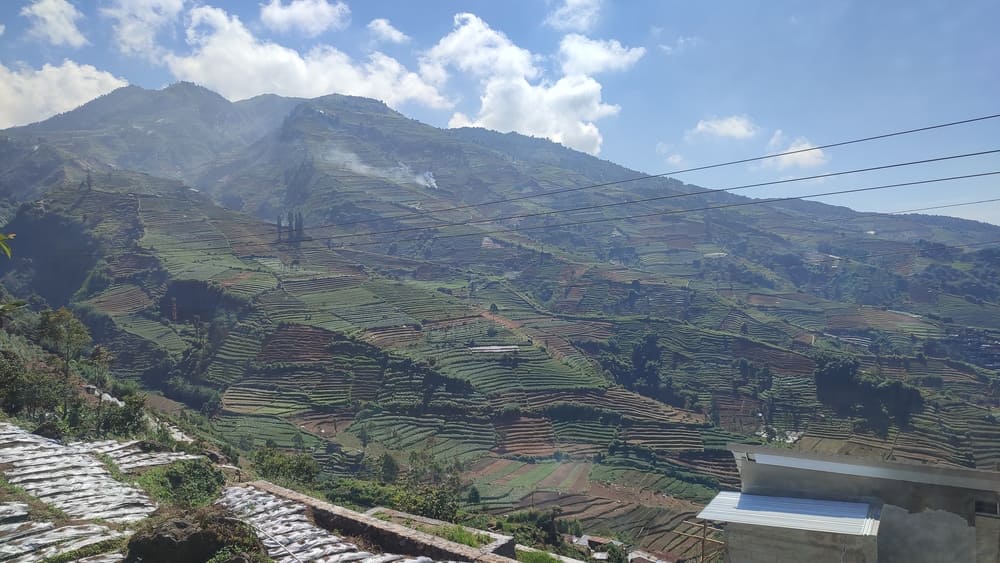
When most people hear rice terraces, they immediately think of Bali. Bali indeed has some seriously beautiful rice terrace scenery but Java hides some in its countryside too!
You have to remember that Java is 22 times larger and 33 times more populous than Bali! These people need to eat and there’s much more space to grow crops!
If you want to visit some of these spectacular spots in Java, the area around Candi Selogriyo (a beautiful Hindu temple) is not so far from Yogyakarta – only around 2 hours by car or motorcycle.
Getting there by public transport involves changing a few rural buses. One way to do a day trip to Selogriyo independently is to rent a motorcycle and remain flexible throughout the day.
Alternatively, you can book a very affordable tour that will take you to the temples, the rice terraces, and also Borobudur (which is on the way).
11. Cycle Through Small Rural Villages

This one is my favorite budget activity around Yogyakarta. You can rent a bicycle at most hostels or some motorcycle rentals around Lempuyangan and Malioboro.
Then pick a direction. Yogyakarta is quite small and once you leave the city bounds (no more than 5-6 km in any direction from Malioboro) it becomes very rural, very quickly.
My favorite places to cycle through small villages are:
- The area around Goa Selarong;
- The area around Imogiri where you can also go to the Javanese Royal Cemetery;
- The area around this bizarre root bridge.
If you can’t find a bicycle to rent or want someone knowledgeable to bring you to the cool spots, then book a cycling tour.
12. Ride the Gondola at Timang Beach
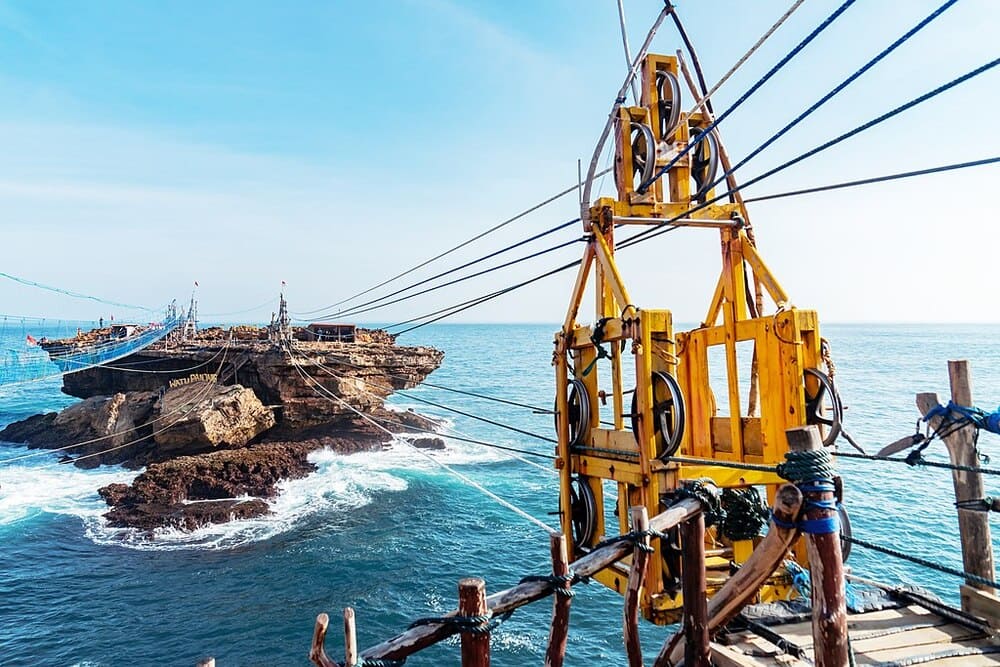
You may have noticed that Yogyakarta (the region) has a rather long coastline – a whole 113 km.
Along it, you will find many cool beaches (some with special cultural significance) like Parangtritis and Goa Cemara.
Unfortunately, the waters on the south side of Java are not quite suitable for swimming – the ocean is too turbulent. Even fishermen don’t have it easy and there is little fishing activity.
One beach has something unique going for it. At Timang Beach, a gondola connects the coast with the nearby isle.
Historically, lobster fishermen used it to more easily travel to and from that rocky outcrop.
The gondola is wooded with metal pulleys and does not look sturdy at all. It’s as if Robinson Crusoe built it.
But it works. It is a popular tourist attraction (very picture-worthy too!)
Since Goa Jomblang is on the way, tours usually combine the two into a day tour.
I can recommend this COMBO tour of Timang Beach and Jomblang Cave.
13. Watch the Sunrise at Java’s Highest City – Dieng Plateau

Dieng Plateau is the only place in Indonesia (outside of Papua) where snow is possible at all. It’s still quite rare – every 2-3 years for a day or two in July or August the conditions are just right for a thin layer of snow to form on Java’s highest plateau.
That’s not the only thing Dieng Plateau has going for itself though.
It’s home to Java’s oldest Hindu Temples, two colorful lakes that change colors as if on a whim, and an active volcanic crater you can almost touch.
If that’s not enough, the sunrise will surely leave you speechless – the combination of height and the surrounding volcanoes make for stunning scenery.
You can visit all those places independently and on a budget if you follow my Dieng Plateau Guide.
It’s worth it to consider a tour though – it’s at least 4 hours from Yogyakarta and you need to be able to comfortably drive a scooter all the way there and back OR be prepared to spend hours in public buses and waiting at the terminals.
A tour is marginally more expensive than doing it by yourself but gives you peace of mind and comfort.
Where to go next? How about I interest you in this quite in-depth guide to Java? I’m pretty confident that it will answer all your questions about things to do in Java!
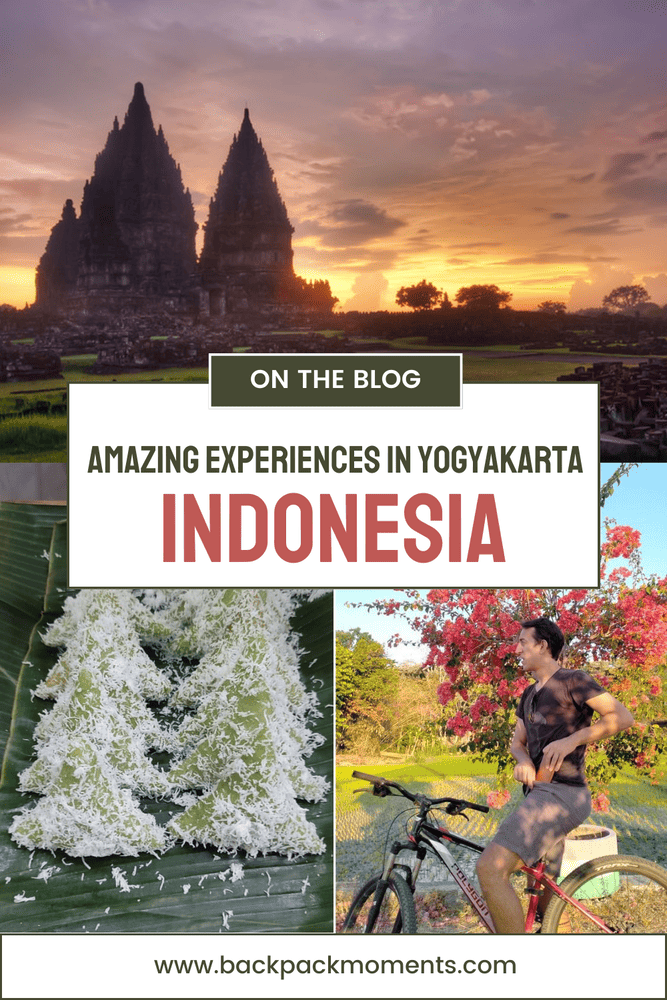

I liked your write up on yogya and the surroundings. It will be definitely helpful as I am planning to visit java in the month of June. Thanks
Lovely to hear! Let me know if I can help with information or practicalities of anything there.
-S.